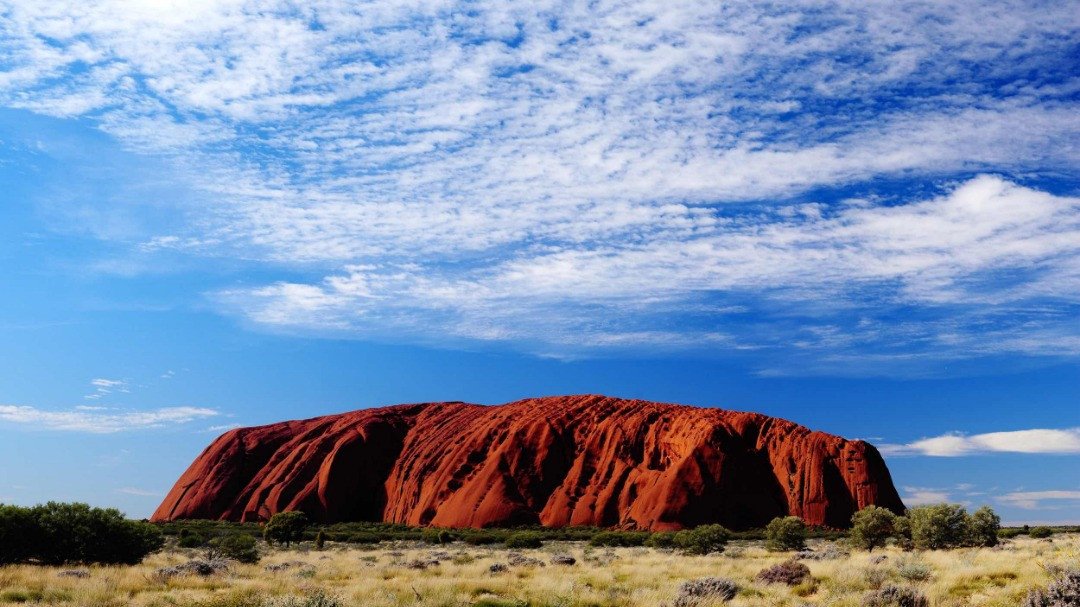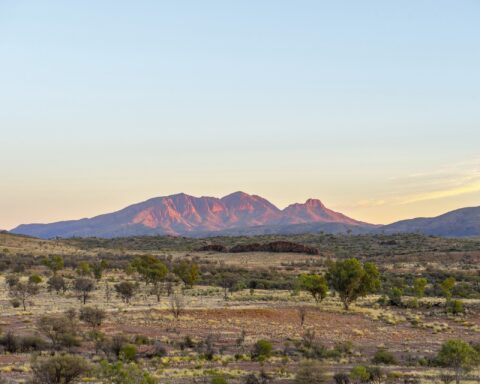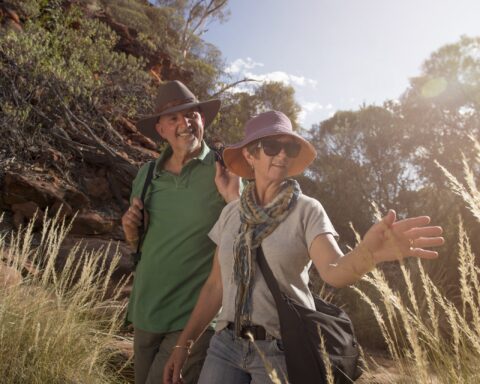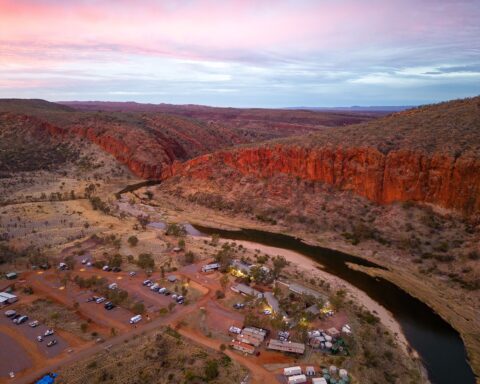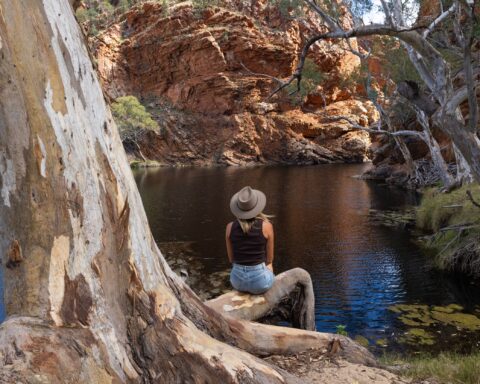The instantly recognisable shape of Uluru, bathed red by the setting sun as it sits majestically amid the surrounding sandy plain, is definitely one of Australia’s most photographed sights. Once known as Ayers Rock, Uluru always appears in overseas visitors’ lists of Australia’s top three attractions, usually alongside the Sydney Opera House and the Twelve Apostles. Yet no matter how many times you’ve seen images of this imposing 348m high monolith, nothing compares with standing in front of it for the first time. It’s a sacred site in Aboriginal culture and Tjukurpa stories tell how Uluru was formed by ancestral beings at the beginning of time.

Various sunrise and sunset viewing spots provide great vantage points to see the amazing colours wash over Uluru at these particularly special times of day. However, they can be very popular, so if you’re looking for a quieter way to enjoy the experience then take a walk to locate a more secluded viewpoint. One little-known viewing point with great vistas over the rock is accessed just a short distance from the Cultural Centre along the Liru Walk.
Walking really is the best way to get up close to Uluru, and a clockwise wander around the base on the Mala Walk is an excellent way to see the rock from every angle. At 10km this walk is one for those with plenty of time, as you’ll need to allow about three and a half hours to do the entire circuit. If you have less time, it’s possible to just do some shorter sections to highlights like Kantju Gorge and Mutitjulu Waterhole. The peaceful waterhole is a beautiful spot to sit and relax for a while and there are rock art sites to see as well.
As a sign of respect for the beliefs of the traditional owners, the management of Uluru-Kata Tjuta National Park asks visitors to not climb Uluru. As of October 26 2019, the climb to the top of Uluru will be permanently closed.

Another great option for exploring around the rock is to hire a bike from near the Cultural Centre and cycle around instead of walking. Or for an even different mode of transport, try a Segway tour. Whatever you choose, remember to head out early to avoid the hottest part of the day.
A great way to spend some time when it’s hot is to drop in to the Cultural Centre. Here you’ll learn about Anangu culture and the long history of the importance of Uluru to the Yankunytjatjara and Pitjantjatjara people – the area’s traditional landowners. You’ll want to allow at least two hours to explore the centre, which includes art galleries and cultural displays. A must-do is a walk through the Tjukurpa Tunnel where you’ll be transported back in time with ceremonial songs, Anangu art and fascinating documentaries.
Another fun way to learn more about the area’s culture is to participate in a dot painting workshop with Maruku Arts. While you’re there you can also pick up a punu (wooden carving), painting or piece of jewellery as a special memento of your trip. Paintings are also available from Walkatjara Art, which is the art centre run by the Mutitjulu community.
The opportunity to see important rock art sites that show fascinating Tjukurpa stories is another big drawcard of a visit to Uluru. Along the Mala and Kuniya walks there are several rock shelters where visitors can get up close to these fascinating artworks. To gain an even greater understanding of the images you are seeing, take the ranger-guided Mala Walk.

For further insight into the culture and history of the region, take a guided tour. As well as walks there are a number of other ranger-guided activities on offer too, including tours around Uluru, bushtucker talks and presentations on the park’s animals. If you’re looking for a once-in-a-lifetime way to experience this amazing place you can take a tour on a camel, or even a Harley Davidson motorcycle. Thrillseekers can also take to the skies on a helicopter trip or go for a tandem skydive for unforgettable aerial views of Uluru.
Uluru is part of the World Heritage–listed Uluru-Kata Tjuta National Park, which is jointly managed by Anangu and Parks Australia. Park entry fees apply, and permits can be purchased online. There is no camping permitted in the park, with the nearest available at Yulara. It’s only a short drive on sealed roads from Uluru to Yulara, which has plenty of accommodation and restaurants as well as an airport.
For ideas on other things to do whilst staying in Alice Springs go to, 10 amazing Alice Springs experiences to check off your Bucket List.

